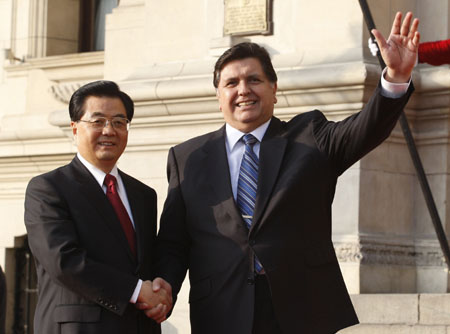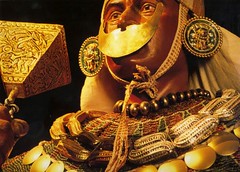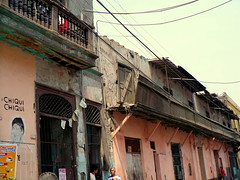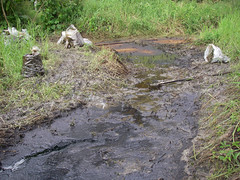Five more tombs have been discovered at the La Pava de Mochumí where recently the 800 year old tomb of a shaman was found, just outside Chiclayo, the archaeology meca of Peru.
Category: "Archaeology"
Documentary: Nasca Lines: Buried Secrets
Readers in the US take note! This Sunday at 10 PM EST, the National Geographic Channel will be premiering a new documentary, Nasca Lines: Buried Secrets, from Edge West Productions, directed by celebrated British documentarian Philip J. Day.
800 year old tomb of shaman discovered
Curandero – witch-doctor or medicine-man in English, but the most direct translation is healer. The tradition of the curanderos still runs strong in the Muchik northern coast of La Libertad and Lambayeque, particularly around Chiclayo. The traditions and techniques of theses healers date back to pre-Colombian times and the the civilisations of the Chimú, Sicán and the Moche before them. Archaeologists have recently been given a glimpse into this period of time with the discovery of the 800 year old tomb of a Sicán curandero.
Torrential rains put more Incan sites at risk
The heavy rains that caused damage to a wall at ancient Sacsayhuamán have not halted. Other sites are suffering damage too and tourists are facing restrictions and where they are allowed to go.
Chaupiguaranga: the greatness of simplicity
The only thing not simple about this marvellous place is pronouncing the name it has been given: the Chaupiguaranga Ravine. Everything else promises and delivers a rustic experience in a time when even the travels of seasoned travellers are being influenced by all things “fashionable”.
Torrential rains in Cusco damage Inca wall at Sacsayhuamán
Heavy rains have not only affected Lima this year, what is traditionally the start of the Andean wet-season has also seen rains heavier than usual, some even damaging ancient walls at the Inca site of Sacsayhuamán.
Volunteer at ancient Chan Chan
Does toiling under the hot desert sun heaving bricks up a ladder to rebuild collapsing walls interest you? What if the walls were many hundreds and hundreds of years old and part of the world’s largest adobe city, one of the largest cities of any kind in the ancient world? A city home to the rulers of the Peruvian desert coast, the Chimú imperial heart of Chan Chan. Does a couple of days of hands-on archaeology at one of the world’s most important archaeological sites interest YOU?
Top 10 Archaeological Discoveries of 2009
Peru – the land the never ceases to amaze and who’s history is so long and plentiful that we’ve barely been able to scratch the surface. Find out what archaeologists have discovered just during 2009.
School kids attack Chan Chan’s finest huaca
Terrible news for lovers of Peru’s ancient history and archaeology enthusiasts: Peruvian school children viciously attack one of the greatest works of their ancestors.
The group filmed themselves throw rocks, kick and scratch the ancient friezes of the Huaca Arco Iris, also known as the Huaca del Dragón, to later post on You Tube to show off to friends. One, putting on a Spanish accent, films them saying “kick it, kick it, this is how you love your Peru, no?”.
Four ceremonial fountains discovered at Machu Picchu
The Incas possessed what was the culmination of all Andean hydraulic engineering knowledge developed over millennia by the civilisations that came before them. This knowledge is said by experts to have been far superior to that of the Spanish who conquered them and wiped it out for ever. As good a place as any to witness the evidence of their impressive skills is at Machu Picchu, and it is at this famous site that yet more discoveries have been made.
Naylamp’s temple discovered in Lambayeque
After eight months of careful excavation, archaeologists of the Brüning Museum in Lambayeque have discovered, next to the Huaca Chornancap pyramid, what is thought to be the sacred temple of Naylamp, a supposedly mythical ruler that according to oral legend was the founder of the post-Moche Lambayeque civilisation.
The missing link in Lambayeque
Researchers scouring the Lambayeque region for decades in an attempt to discover more about its most ancient past have directed their attention towards the archaeological site of El Chorro, located in the district of Pomalca.
Their efforts were successful.










